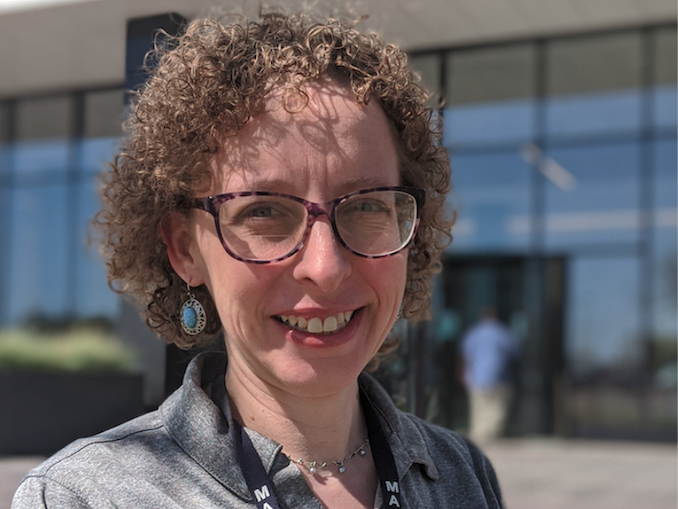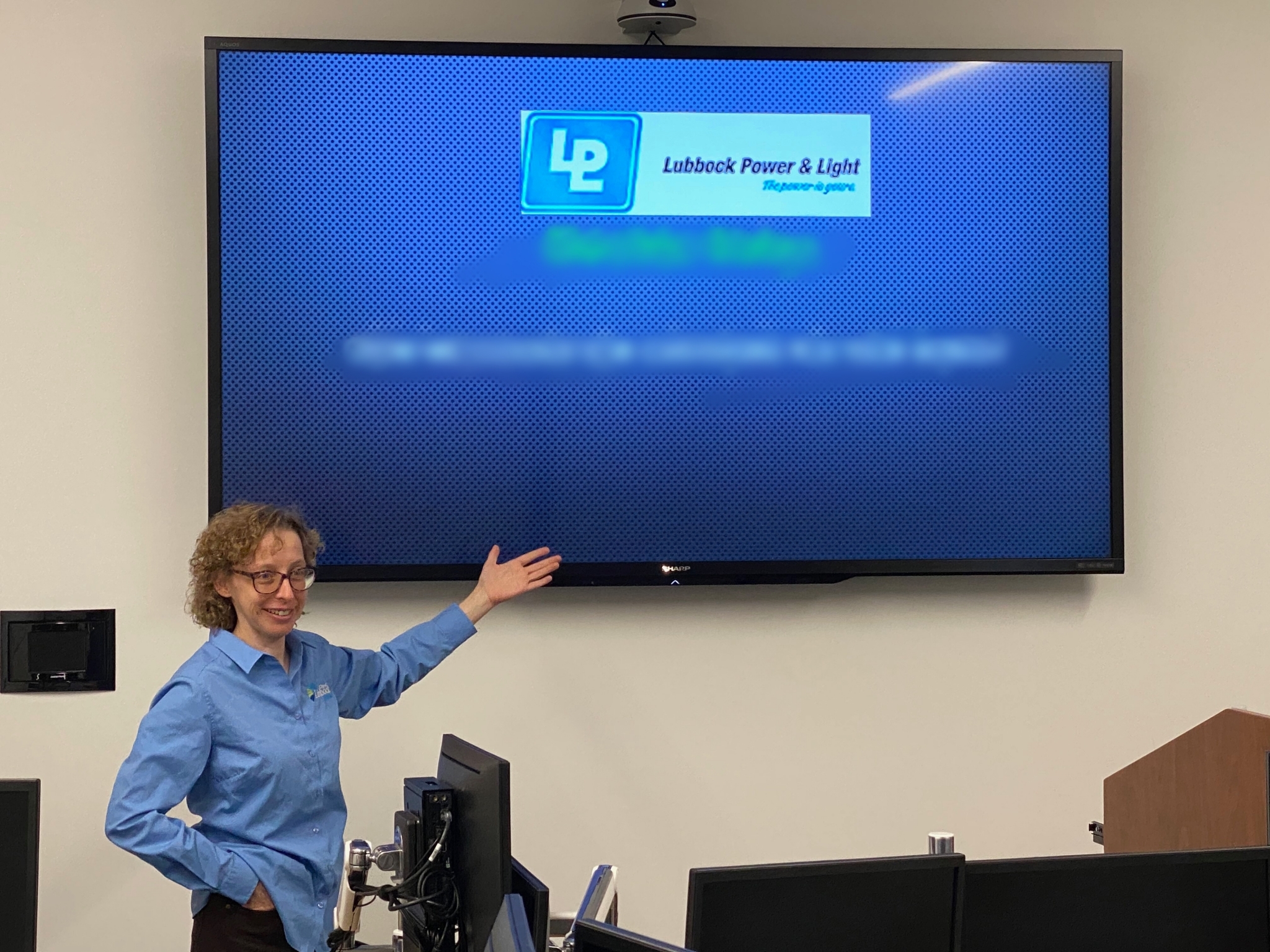

November 23, 2020
An elementary school teacher and technical trainer sound like two different jobs, but they have more in common than you might think.
Amy Sue Stirland taught elementary school reading and math for 10 years before she decided she was ready for a change. In 2016, she joined City of Lubbock Utilities (COLU) as a call center representative. Less than a year later, she was promoted to a trainer position and co-led her first customer service representative (CSR) training session. Now, she is one of two technical trainers at COLU.
“It was definitely nerve-wracking to go from teaching children to teaching a group of my peers,” said Stirland. “But I was able to call on my past teaching skills and translate very technical policies and systems into simple and easy-to-understand materials.”
Streamlining and simplification are at the heart of Stirland’s training methods because both make it easier for students to learn – regardless of age. In fact, she says one of her favorite projects was converting a 3-inch thick binder of paper reference materials into a searchable digital database.
COLU serves as the call center for all city-owned utility services – City of Lubbock water and wastewater, stormwater, solid waste and Lubbock Power & Light electric – so CSRs must learn about the different systems and policies for each, and be well-versed in billing. Rather than searching through hundreds of sheets of paper while on a customer call, CSRs can access answers and information with just a few clicks.
“With the new database, we noticed newer CSRs didn’t call on us for help as often. They became more confident in their abilities to assist customers and problem-solve,” said Stirland. “Even more importantly, it allowed us as a group to be more consistent in our approach and answer customer questions faster – both important measures for high-quality customer service.”
Stirland and her co-trainer design all of the curriculum for each 16-week new CSR training course, which takes place twice a year. After 161 hours of classroom training and two weeks of virtual call center floor training, the new CSRs graduate and move on to independently handle customer requests.
“Before the pandemic, we met in the classroom, learning and practicing the use of the computer system and how to speak with our customers about common questions and situations. Then, we moved to the customer service call center floor where the new CSRs and coaches worked together to quickly build their skills through practical application of what they had learned,” she said.
Because of the pandemic, Stirland had to quickly pivot to providing the same level of training in a virtual environment.
“The in-person learning and trainer-trainee collaboration were a huge component of our course, especially because the job demands interpersonal skills,” she said. “Virtual classes are challenging for kids and adults alike for a number of reasons, but we’re adapting and working through it together one day at a time.”
In addition to training new CSRs, Stirland’s team creates and hosts monthly interactive refreshers for all current CSRs to keep their skills and knowledge of customer programs and guidelines sharp. She also conducts ongoing reviews and creates new policy trainings as needed.
When she’s not training, she’s frequently checking in with new hires, developing practice activities for the CSRs and building the new database of employee information.
“I know I’ve done my job when the CSRs don’t have to consult their coaches or the digital database,” said Stirland. “Whether you’re working with children or adults, it’s really rewarding to help and watch people learn and grow. I’ve seen nearly 70 CSRs become seasoned customer service professionals, and I’m really proud of them and the work this group does to serve all of our customers.”
Outside of work, you can find Stirland painting, making Christmas stockings ahead of the holidays, and hiking and camping with her husband.

